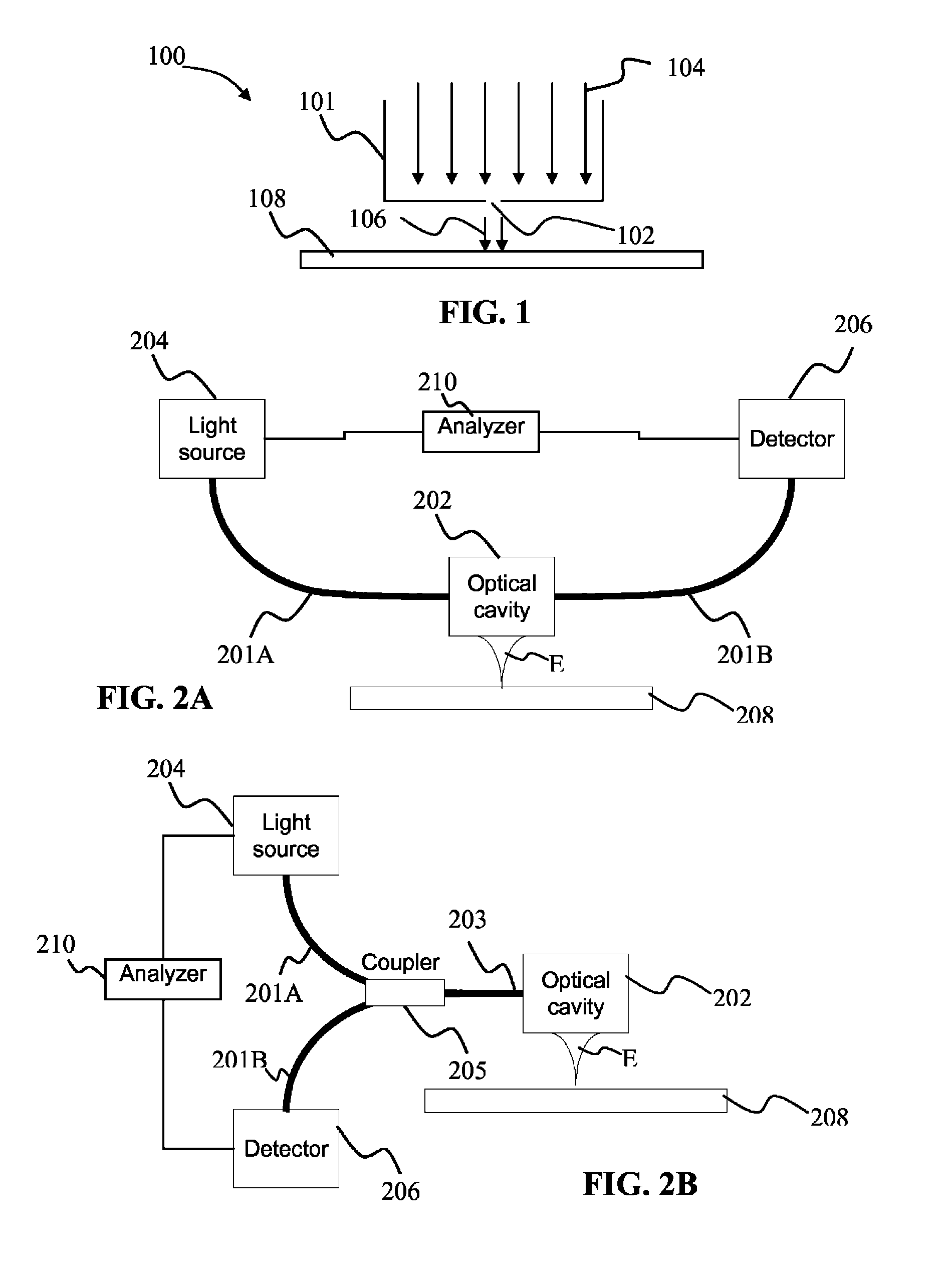Near field detection for optical metrology
a near field detection and metrology technology, applied in the field of optical metrology, can solve the problems of limited spatial resolution, limited wavelength range resolution, and large wavelength of relevant spectral bands, and achieve the effects of fewer scanning steps, different widths, and more information about the targ
- Summary
- Abstract
- Description
- Claims
- Application Information
AI Technical Summary
Benefits of technology
Problems solved by technology
Method used
Image
Examples
embodiments
[0032]In an embodiment of the present invention, a near field optical probe is located within the central obscuration of the objective of an optical metrology or inspection tool. The near field optical probe includes an optical cavity with at least one opening configured to face a target. A width of the opening is smaller than the wavelength of the electromagnetic radiation. The near field optical probe includes a mechanism configured to bring the optical cavity into proximity to the target.
[0033]When the optical cavity is brought into sufficient proximity to a target evanescent optical waves emanating from the cavity through the opening can be coupled to both the target and a propagating wave inside the cavity. Interaction between the evanescent wave and the target can change in the coupling between the near field radiation and the propagating wave. Changes in the coupling between the near field wave and the propagating wave can be detected. This technique can detect changes in a m...
PUM
| Property | Measurement | Unit |
|---|---|---|
| thickness | aaaaa | aaaaa |
| thick | aaaaa | aaaaa |
| sub-wavelength | aaaaa | aaaaa |
Abstract
Description
Claims
Application Information
 Login to View More
Login to View More - R&D
- Intellectual Property
- Life Sciences
- Materials
- Tech Scout
- Unparalleled Data Quality
- Higher Quality Content
- 60% Fewer Hallucinations
Browse by: Latest US Patents, China's latest patents, Technical Efficacy Thesaurus, Application Domain, Technology Topic, Popular Technical Reports.
© 2025 PatSnap. All rights reserved.Legal|Privacy policy|Modern Slavery Act Transparency Statement|Sitemap|About US| Contact US: help@patsnap.com



